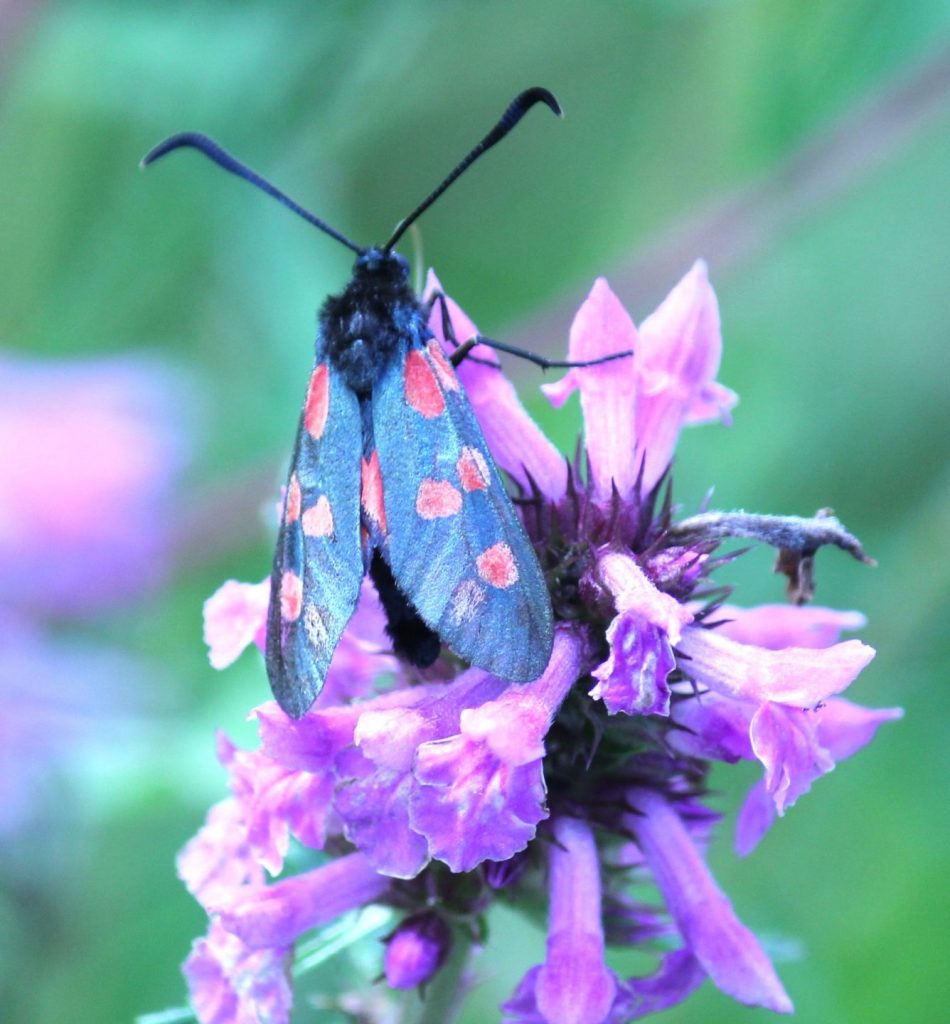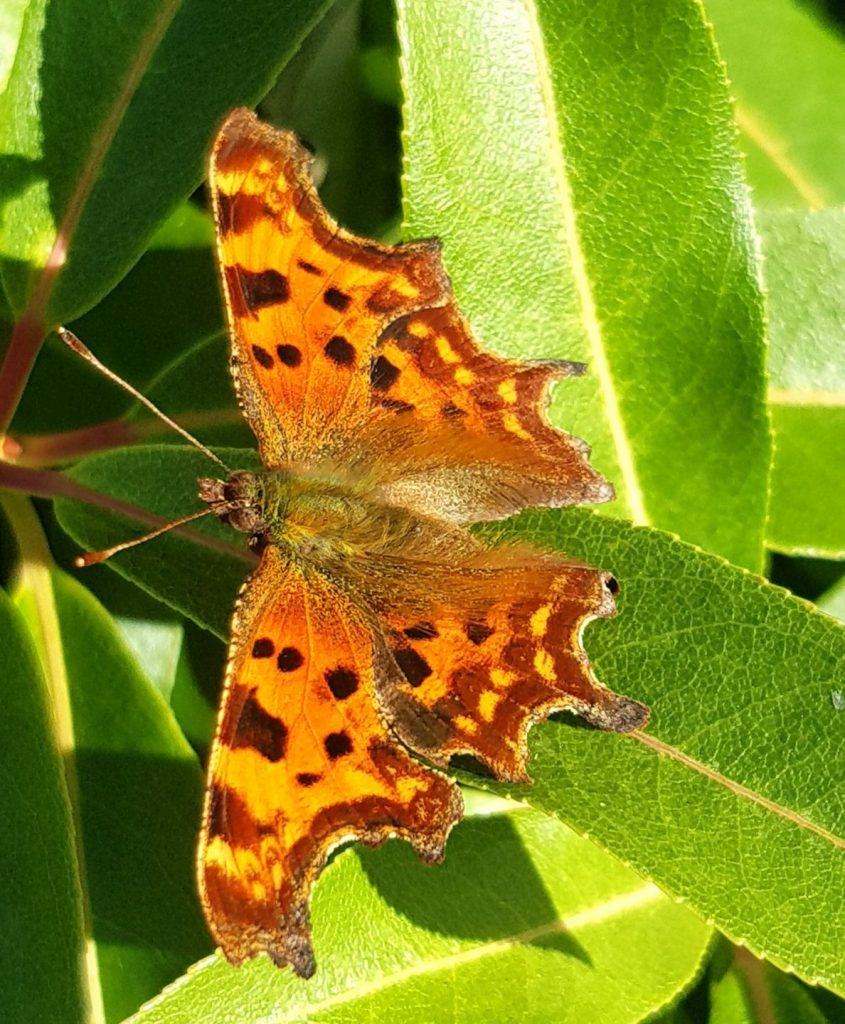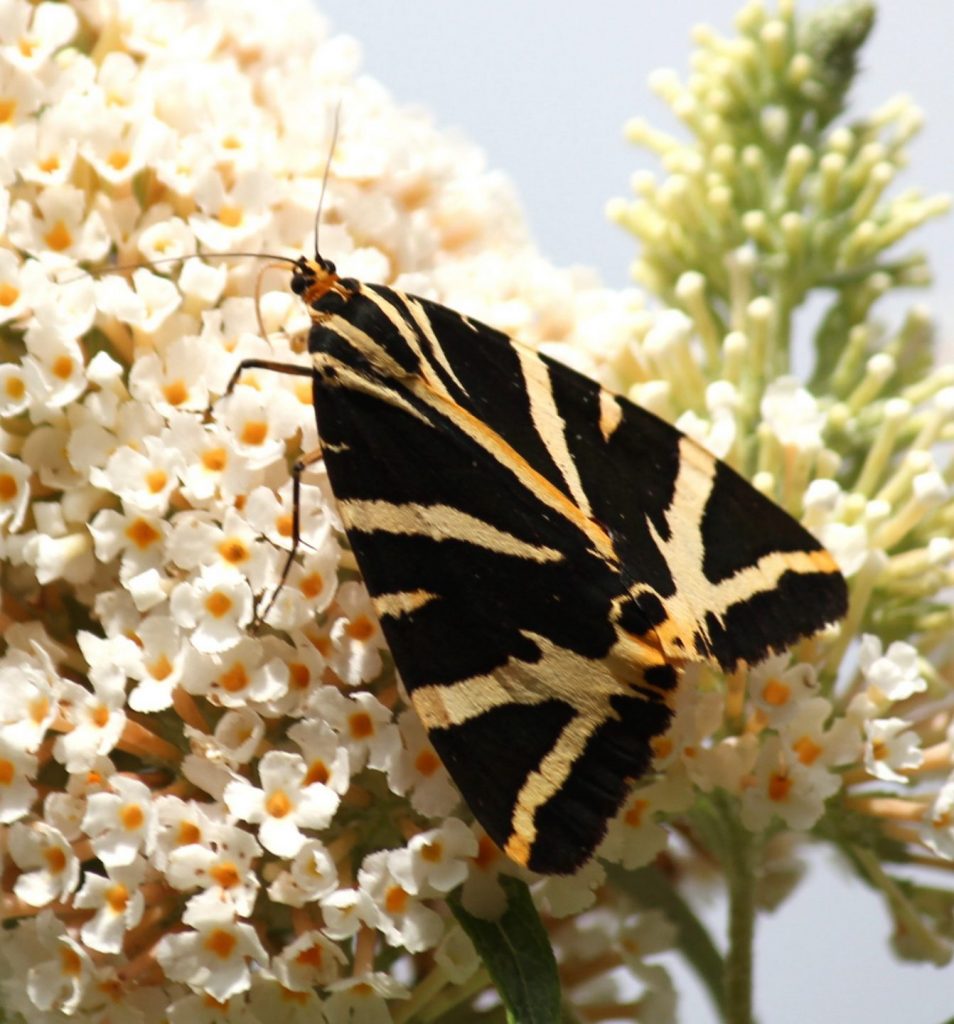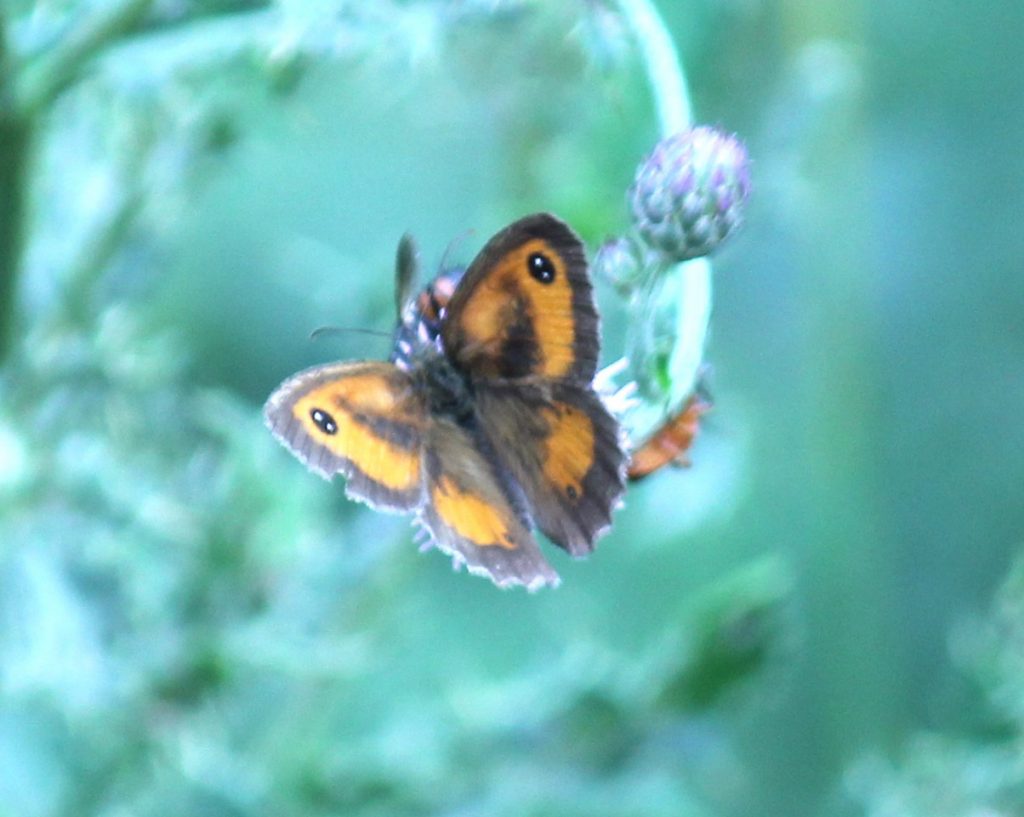June and July see wildlife at its peak activity. Swifts are screaming, bees are buzzing and grasshoppers chirping. Almost every flower has an insect searching for nectar and/or pollen. And don’t forget flying ants!
What to look out for
Native flowers showing best from June include Oxo-eye, Knapweeds, Orchids, Vetches, Birdsfoot Trefoil, Scabious, Yellow Rattle, and so many more. And in ponds Purple Loosestrife, Watermint are joining the party while Yellow Flag Iris are going over.
Some of our most familiar butterflies, like Red Admirals, Peacocks, Small Tortoiseshells and Commas, are with us from spring to early autumn, but June and July sees the appearance of our true summer species – the Browns. Meadow Browns dominate our flower meadows from June and are joined by Gatekeepers along hedges and Ringlets in July.
Moths – where do you start? The variety of garden moths is maxing with hundreds of different species possibly turning up, some in the day, like Jersey Tiger, Silver Y, Burnets and Cinnabar, but the majority at night eg. Spectacle, Eggar, Hawkmoths etc. Bumblebees are plentiful now as nests are busy with workers. Various solitary bees, wasps, hoverflies, beetles are also busy.
Where there’s a diversity of prey there are predators. All spiders and dragonflies eat insects, of course, but in big groups of insects like flies, beetles and bugs there are vegans and flexitarians, but also full-fledged specialist carnivores, such as Robberflies, Snipeflies, Tiger Beetles, Devil’s Coach Horse, Assassin Bugs, Pond Skaters and Water Boatman.
Two or three similar species of Blue Damselfly are flitting around garden ponds now and perhaps handsome Broad-bodied Chasers are laying eggs in surface pondweed alongside Damselfies and Hawkers including UK’s biggest, the Emperor Dragonfly.
Bird breeding peaks in June and starts to tail off in July. Some migrants like Swallows and Martins might fit in a late brood before heading south to Africa but a few, like Swifts and Cuckoos, start leaving UK in late July as they finish breeding.
I’ll be out looking for bats and glowworms on warm summer evenings, from dusk. The commonest bats locally are early evening Noctule, our biggest, and tiny Pipistrelles.
Things to do (and not do).
You’ve heard of No Mow May, why not extend it into June? Consider Hedgehogs, Slowworms, Toads and baby frogs, if you need to mow. Delay hedge trimming and strimming. Protect young birds, froglets, slowworms from cats. Why not make a “bee bar” with a saucer, pebbles and water.
Extending sources of nectar and pollen for pollinators. All sorts of great nectar sources keep flowering if deadheaded regularly especially Daisy family eg single dahlias, calendulas, helenium, scabious, echinacea but also lupins and Buddleia. For some more clumpy perennials like hardy geraniums, salvias, campanulas, sedums, penstimons, try something more radical – the Chelsea Chop.
Ponds – top up with rainwater, remove dead growth to stop it rotting. Watch out for young frogs – dampdown hot stone edges as this can kill them’ or remove them altogether.
Wildlife Plant of the Month – Yellow Rattle is an annual of value to the wildlife gardener. It’s a favourite with bees. Like its relatives Eyebright and Lousewort, it is a semi-parasite mainly of grasses and sometimes clovers. It holds back growth of meadow grasses during May to July while itself growing and flowering. So meadow flowers can develop and bloom without so much competition. Once the rattle seeds and dies, the grass comes back. Rattle seed won’t establish if the soil is too fertile as grasses ae too vigorous. The seed is best sown on a short lawn in autumn.




